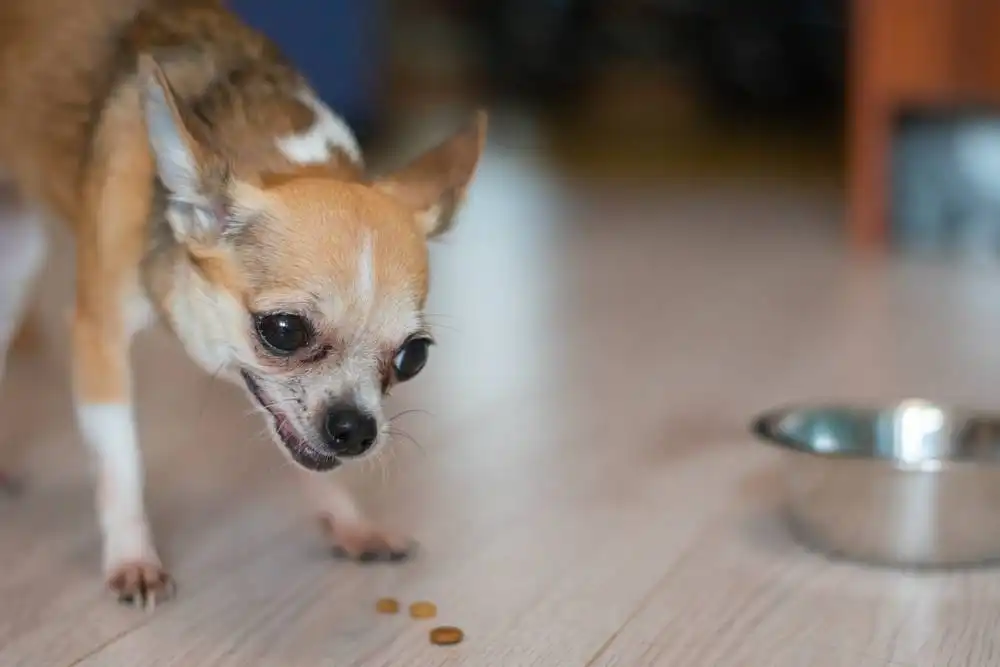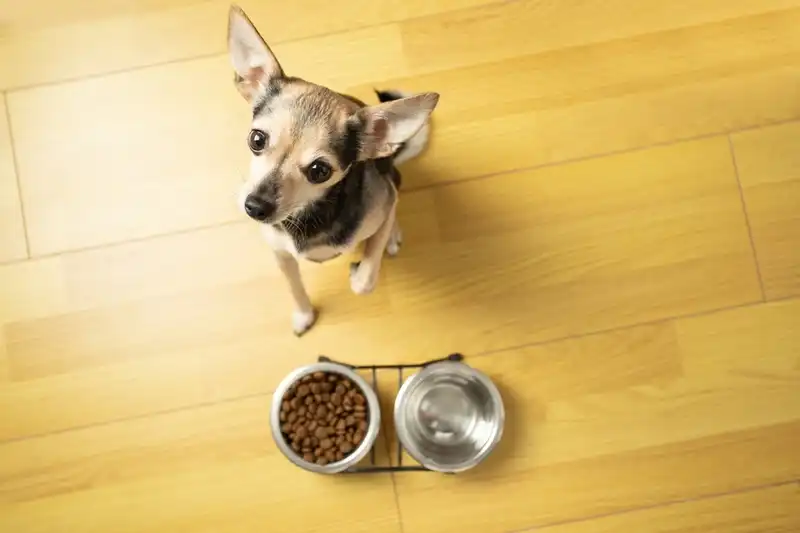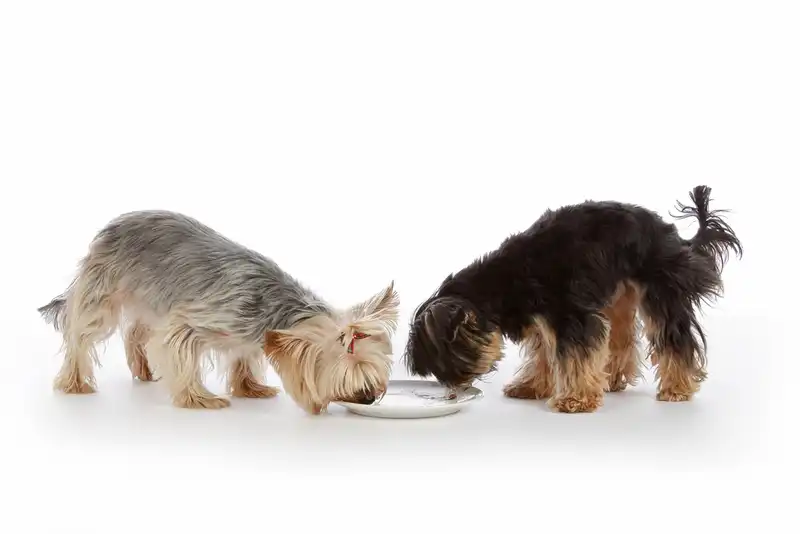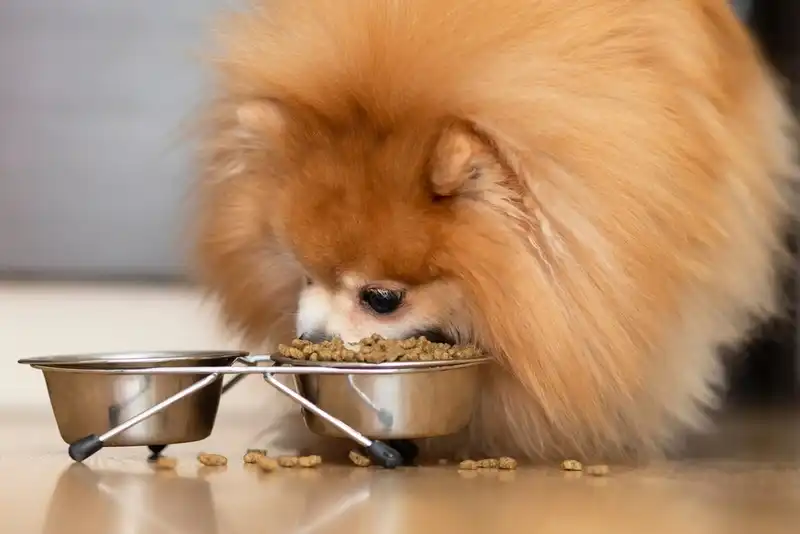What to feed small dogs

Owners of small breed puppies are often interested in what is best to feed their pet, because nutrition is an important factor in maintaining health. Sometimes choosing the type of food and a suitable diet is a difficult task for owners.
And when solving it, you need to take into account all the characteristics of the pet. However, no matter what type of feeding the owner chooses, the main thing is that the food meets all the needs of the dog and maintains its health. In this article, we will figure out how to properly feed small breed dogs and what needs to be taken into account.
What dogs are considered small breeds?
Small dogs are those whose weight in adulthood does not exceed 10 kilograms. Such pets are most often acquired by city dwellers, because they are perfect for a small apartment and adapt well to city conditions. In addition, some representatives of this group are not very physically active, which is also suitable for owners who do not have the opportunity to devote much time to walks. But at the same time, these dogs require special care and attention from the owner.
Small breeds can be divided into two groups:
- Miniature breeds, representatives of which in adulthood reach a weight of no more than 4 kilograms. This group includes toy terriers , Yorkshire terriers , Pomeranian spitz , Chihuahuas , Brussels griffons , Pekingese , Maltese .
- Small breeds, whose representatives weigh from 4 to 10 kilograms in adulthood. These include dachshunds , bichon frises , Welsh corgis , West Highland white terriers , French bulldogs , shih tzus , and Jack Russell terriers .

What food to choose for small dogs?
For feeding small dogs, you can choose either ready-made industrial food (dry or wet) or a home-made diet (often called “natural”). The main thing is to focus on the pet’s needs for energy and nutrients. However, if you want to cook for your pet yourself, you will need to consult a veterinary nutritionist.
Dry food is selected in accordance with the weight and age of the dog, as well as its physiological condition – it must satisfy all the needs of puppies and adult animals. At each stage of life, the pet will need special nutrition. Up to 10 months, they need food for puppies, from 10 months to 8 years – for adult animals, from 8 years – for seniors.
Many small breed puppies have the following characteristics:
- increased energy requirements – small animals require more calories per kilogram of body weight than large dogs;
- Tendency to tartar formation – small dogs are often prone to plaque and tartar accumulation;
- picky appetite – for many owners, the information that small dogs can be picky eaters is nothing new;
- tendency to digestive disorders – representatives of small breeds are prone to constipation.
- These and other features should be taken into account by the dog’s food. At the same time, the food should be balanced and easily digestible.

When creating a home-cooked diet, you should seek help from a veterinary nutritionist. He will be able to balance the diet so that it provides the body with all the nutrients in a strictly defined amount. Without excess or deficiency. Here are the products he may include in the menu:
- Meat. Meat is given strictly boiled, because raw meat can be a source of parasites.
- Fish. Only sea fish and boiled fish, raw fish also carries the risk of helminth infection.
- Meat by-products such as heart, liver, lungs, kidneys also boiled
- Eggs.
- Cereals. Rice, buckwheat and rolled oats.
- Vegetables and fruits. Carrots, cauliflower, zucchini, apple.
Meat and fish should only be given in the form of fillets, without bones, as they pose a risk of injury to the esophagus, stomach and intestines. Meat by-products, eggs, cereals and vegetables are usually recommended to be heat-treated and chopped, as dogs cannot perform chewing movements. In addition, it is important to ensure that all products are well washed and do not contain traces of contamination.
The list provided is just an example and should not be relied upon. Any of the ingredients should only be included in the diet on the recommendation of a veterinarian, as each of them has specific instructions, such as cooking method and serving temperature.
It is important to remember that you cannot combine home-cooked food with ready-made dry or wet rations. Even if it is a lean piece of boiled meat – when feeding a balanced diet, even meat can upset the balance.

How often to feed?
It is optimal to feed an adult dog twice a day – this regime corresponds to the evolutionary habits of these animals. After all, in nature, the ancestors of dogs eat rarely, but immediately in large portions.
However, the number of meals is a rather arbitrary figure that may vary for different pets.
The number of feedings depends on age, physiological status, and health characteristics.
For example, puppies are fed more often than adult dogs. They feed on their mother’s milk approximately every two hours, and during the growth period, that is, approximately 8-10 months, their feeding frequency should gradually decrease to 2 times a day.
In the last weeks of pregnancy, females may have a significantly reduced ability to eat a large portion of food at one time, while their energy needs almost double! This means that in addition to caloric nutrition, they need many meals, because they cannot eat as much at one time as they used to.

What should you not feed small breed dogs?
Small dogs often have very sensitive digestive systems and can also suffer from food allergies and intolerances, so their diet should be taken very seriously.
Here is a list of products that are not recommended and even dangerous for animals:
- Table food. Human food differs from the food needed by animals. It often has a higher fat content, added spices, salt, which increases the load on the pet’s pancreas and causes digestive disorders.
- Bones. Animals should not be allowed to eat bones, as they can injure the pet’s stomach and intestines, cause internal bleeding, blockage of the esophagus and intestinal obstruction.
- Pork. This type of meat should be included in the menu with caution due to its high fat content and the presence of dangerous parasites in its raw form.
- River fish. May be infected with helminths and also contain sharp bones that can injure the mucous membrane of the mouth and stomach.
- Raw meat and fish. Both of these products carry the risk of helminth infection. And raw fish, in addition, contains substances that can cause a deficiency of some vitamins.
- Peas, beans, legumes. Cause bloating in the intestines as a result of increased gas formation.
Alcohol. Causes severe poisoning. - Sweets. Various sweets and baked goods contain sugar, which is not needed by the animal organism.
Salty. Pet food does not need additional salting, as the products already contain a sufficient amount of salt. Excess salt burdens the kidneys and can also increase blood pressure. - Fatty, fried, smoked foods put a lot of stress on the liver.
- Chocolate and products containing cocoa beans, grapes and raisins can be deadly to pets.
Feeding Tips
Here are some basic recommendations that owners of small breed puppies should follow.
- Feeding a small dog should be done in accordance with its age and physiological condition. Puppies, pregnant and nursing dogs should be fed taking into account the increased need for energy and nutrients. Older dogs should be fed taking into account possible diseases and individual characteristics.
- A dog should be switched to a new diet when it enters a new stage of life (for example, from a puppy to an adult dog) or its physiological status changes (after sterilization or castration). A new diet will also be required for animals that have been diagnosed with any diseases or are prone to them.
- Don’t let your dog overfeed. Follow the exact recommendations on the food package or from your veterinarian. Although small and miniature animals require more energy than larger animals, this is a very small amount of food relative to their weight. It is very easy to overfeed them.
- Small dogs are often picky eaters, so you can alternate different textures of food (dry with wet) to improve their appetite: periodically feed them wet food in the form of pieces in sauce, jelly or pate. Wet food also prevents excess weight and urolithiasis. The main thing is to remember that dry and wet food should be from the same manufacturer, line and focus, and also remember that each of them has its own caloric content.
- Dry food helps prevent problems with teeth and gums, which are often found in small pets.
The dog should always have free access to clean, fresh water. It is important to ensure that the pet drinks enough liquid. And if this does not happen, stimulate its consumption.
Whatever feeding method you choose, make sure it meets your pet’s energy and nutritional needs. Remember to pay attention to the dosage and follow the feeding schedule. This will help maintain your pet’s health and well-being.


